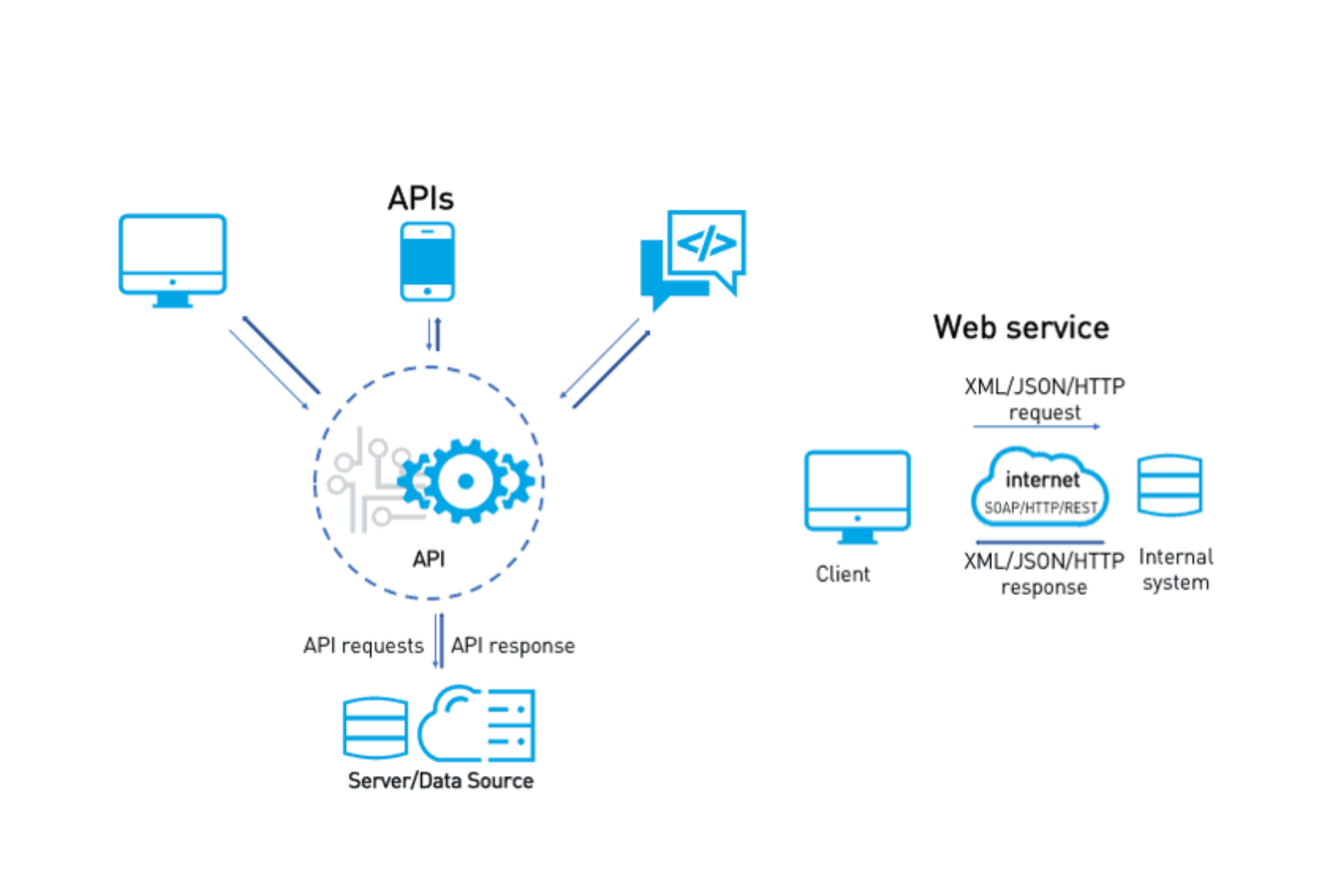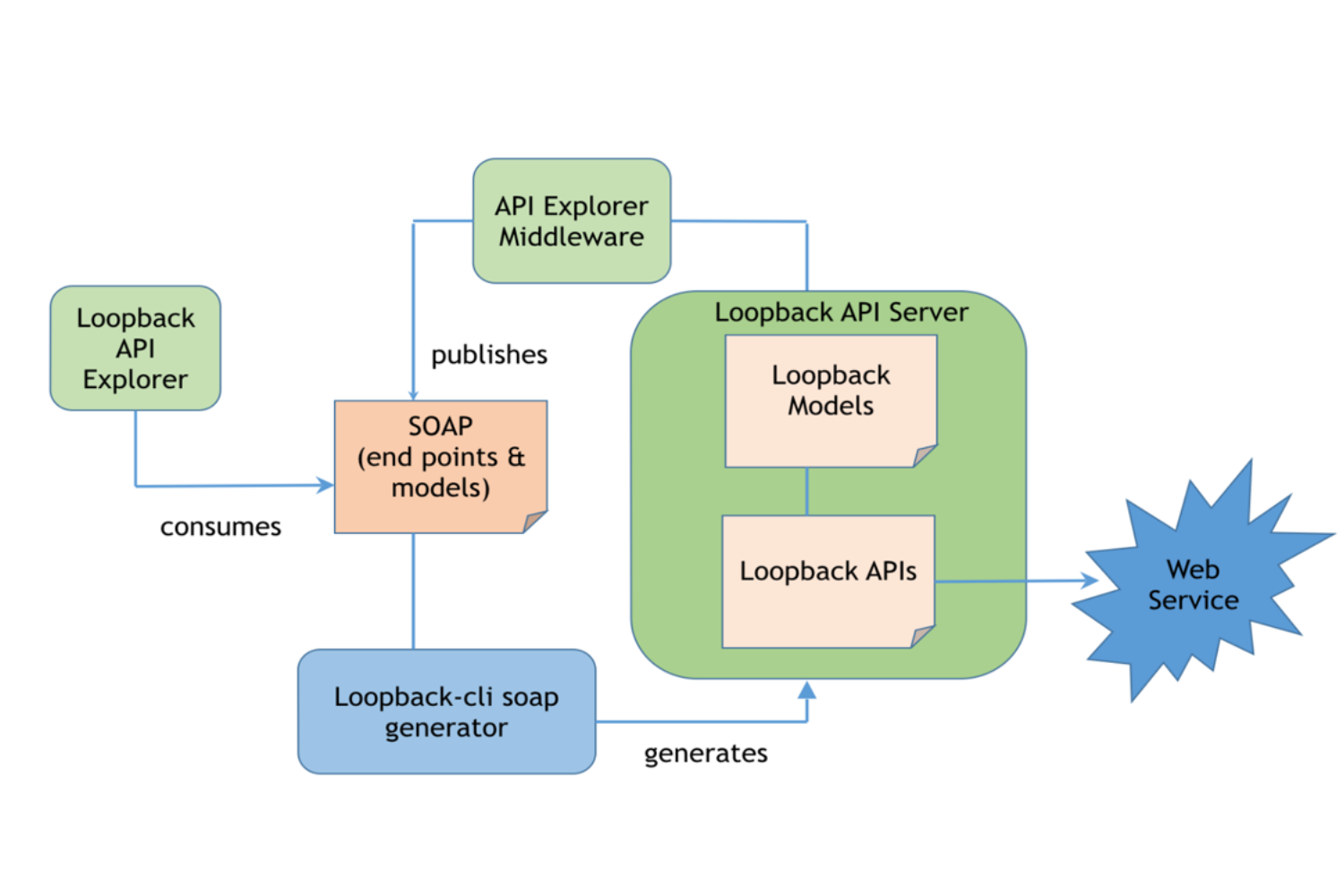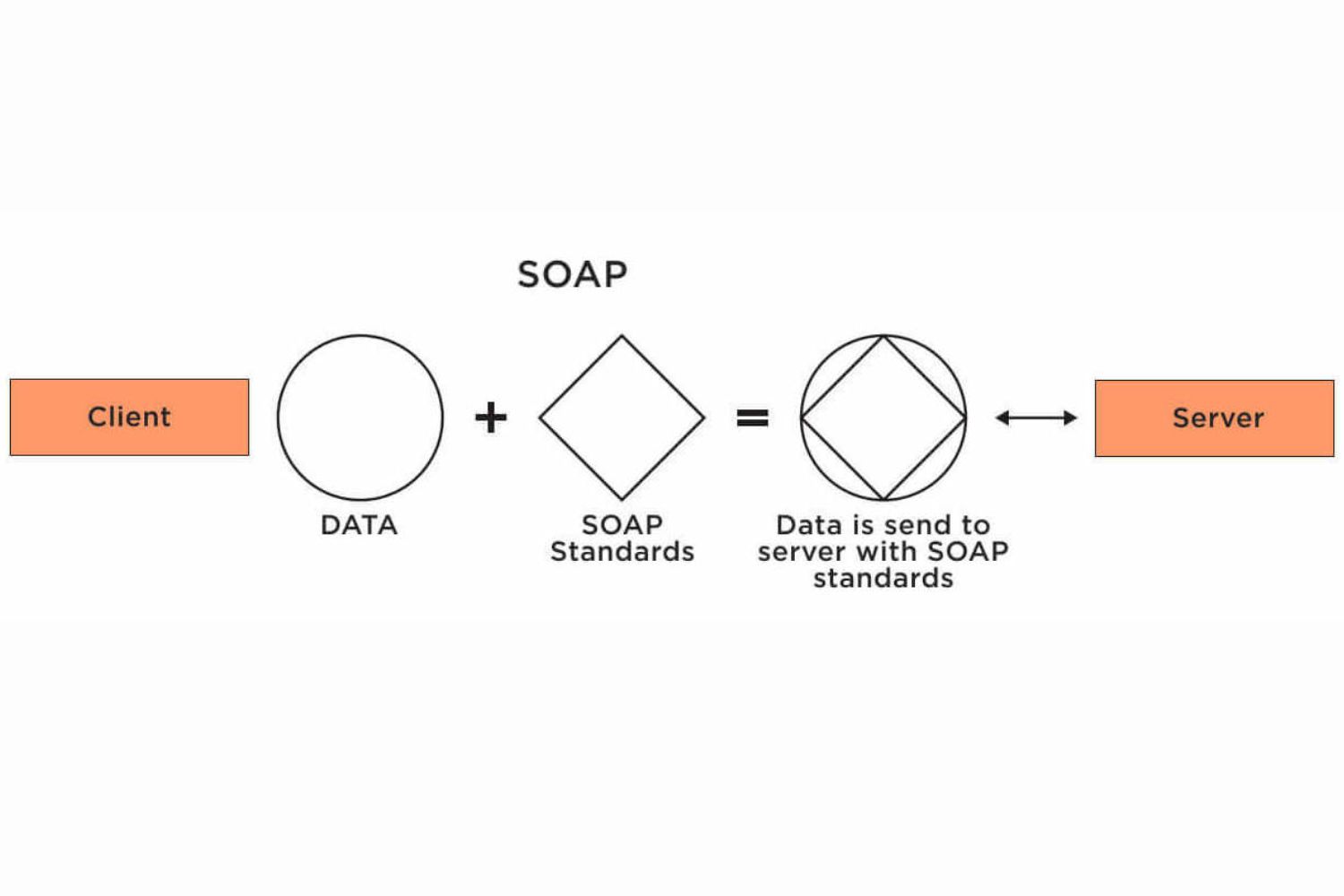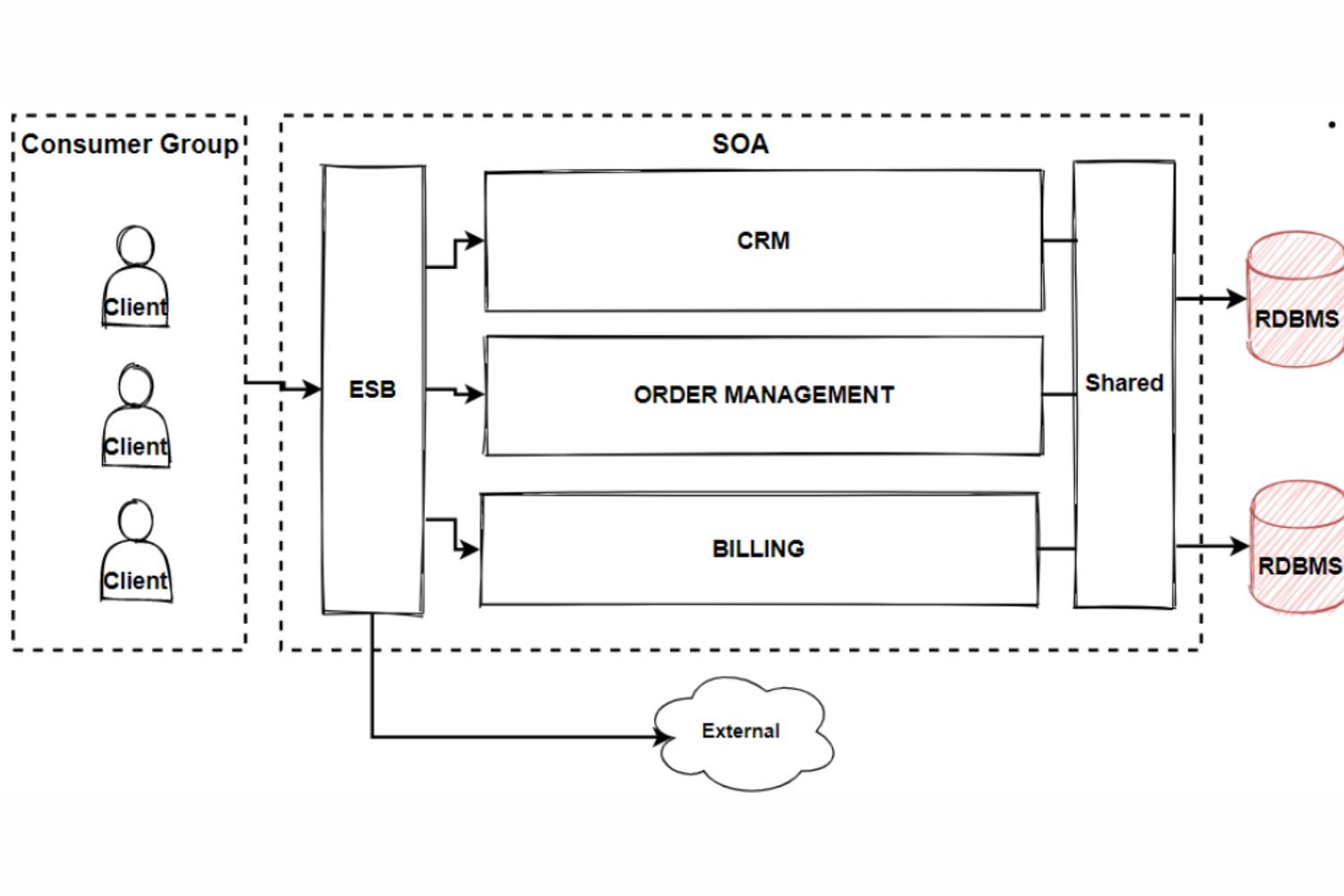
SOA WEB SERVICE
A web service is a software system that enables machine-to-machine communication over a network. It has a machine-processable interface (specifically, web Service Definition Language, or WSDL). Web services perform a single task or a set of tasks. A web service is described using a standard, formal XML concept known as its service description, which contains all of the information required to interact with the service, such as message formats (which detail the operations), transport protocols, and location.

Types of Web Services
There are mainly two types of web services.
1.SOAP (Simple Object Access Protocol) web services
2.RESTful (Representational State Transfer) web services

SOAP Web Service
SOAP web services are a type of web services that enables two software applications to exchange data over the internet. The SOAP protocol’s message format is XML (Extensible Markup Language), and it can be used to send messages over various communication protocols such as HTTP, SMTP, and TCP.
Working of SOAP Web Services
The client sends a request message to the server, which then processes the request and returns a response message to the client. The SOAP message format is XML-based and consists of a header and a body. The header contains message-specific information such as the message type and sender, whereas the body contains the actual data being transmitted.

One of the key characteristics of SOAP web services is that they rely on a set of standardised protocols and message formats, allowing different applications to communicate with one another regardless of programming language or platform.
Working of SOAP Web Services
SOAP (Simple Object Access Protocol) web services work based on a set of standards and protocols for exchanging structured information in the implementation of web services. Here’s a high-level overview of how SOAP web services work:
1.Message Structure: SOAP messages are typically XML documents that consist of an envelope that encapsulates the actual message content. The SOAP envelope includes the following parts:
1.Header: An optional section that can contain information about authentication, encryption, or other application-specific details.
2.Body: The main content of the SOAP message, which contains the data being sent or the operation to be performed.
3.Fault: In case of errors, a fault element is used to convey error information.
2.XML-Based: SOAP is based on XML, which provides a structured and platform-independent way of encoding data. The XML format allows for strong typing and well-defined data structures.
3.Protocols: SOAP relies on underlying transport protocols for message transmission. It can be used with a variety of transport protocols, including HTTP, SMTP, TCP, and more. In web services, HTTP is a common choice for transporting SOAP messages over the web.
4.Service Description: A SOAP web service is typically described using a Web Services Description Language (WSDL) file. The WSDL file defines the service’s operations, data types, and endpoints, allowing clients to understand how to interact with the service.

5.Response: The server sends a SOAP response message back to the client. The response contains the result of the operation or any requested data. The response is also structured as a SOAP message with an envelope, header, and body.
6.Parsing and Serialization: The client and server use XML parsers to parse incoming SOAP messages and serialize outgoing messages. This ensures that the messages are correctly formatted according to the SOAP specification
7.Error Handling: If an error occurs during the processing of a SOAP request, the server constructs a SOAP fault message and sends it back to the client, indicating the nature of the error.
8.Asynchronous Communication: SOAP allows for asynchronous communication where clients can send requests and continue with other tasks while waiting for responses. This is useful for long-running operations.
9.Security: SOAP provides built-in support for security features like WS-Security, enabling encryption, authentication, and authorization of messages.
10.Stateless: SOAP is designed to be stateless, meaning that each request from a client is self-contained and does not rely on previous requests. This promotes scalability and reliability
Benefits of SOAP web services
SOAP (Simple Object Access Protocol) web services have their own set of benefits, which make them a suitable choice for certain scenarios and applications. Some of the advantages of SOAP web services include:
1.Strong Typing: SOAP uses XML as its message format, and XML Schema Definition (XSD) to define data types. This enforces strong typing and provides a high degree of accuracy in data exchange. This can be advantageous in scenarios where data integrity is critical.
2.Security: SOAP offers a range of security features, such as WS-Security, which provides message-level security, including encryption and digital signatures. This makes SOAP a good choice for applications that require a high level of security, such as financial services and healthcare.
3.Reliability: SOAP has built-in mechanisms for ensuring message integrity and delivery. It supports acknowledgments and retries, which enhance the reliability of communication.
4.Transactions: SOAP allows for the use of ACID-compliant transactions, which is important in applications where multiple operations need to be performed as an atomic unit.
5.Standardized Protocol: SOAP is a protocol with a well-defined specification. This can be an advantage in scenarios where interoperability and compliance with industry standards are crucial, as it helps ensure consistency and predictability.
6.Language and Platform Independence: SOAP web services can be implemented in various programming languages and run on different platforms, making them language- and platform-agnostic. This allows for interoperability across diverse systems.
7.Tooling and Support: SOAP has a mature ecosystem of tools and libraries for different programming languages, making it relatively easy to work with. Many integrated development environments (IDEs) offer built-in support for generating SOAP client and server code.
8.Legacy System Integration: SOAP is well-suited for integrating with legacy systems, particularly in enterprise environments where older technologies are still in use.
9.Message Headers: SOAP supports the inclusion of message headers, which can carry additional metadata or information about the message, enabling more advanced processing.
10.Workflow Support: SOAP web services can be used to define and manage complex business processes by using standards like WS-BPEL (Web Services Business Process Execution Language).
Job Roles
1. Web design
2. Front-end web development
3. Web development
4. Full stack developer
5. Web Developer
6. User interface design
7. User experience design
8. SEO specialist
9. Web Application Developer
Salary Expected
The salary for API web services ranges between ₹13 Lakhs to ₹35 Lakhs Per Annum.
Course Highlights
1. Suited for students, fresher’s, professionals, and corporate employees
2. Live online classes
3. 4-month program
4. Certificate of completion
5. Decision Oriented Program of Analysis
6. Live Classes by highly experienced faculties
7. Hands-on experience with real-life case studies

Conclusion
In conclusion, web services are a vital component of modern technology, allowing different systems to communicate and exchange data over the internet. They provide a standardized way for applications to interact and share information, making them essential for seamless integration and scalability. The choice of web service technology depends on factors such as project requirements, existing infrastructure, and the need for specific features like security or interoperability. So, web services play a crucial role in enabling the development of robust and interconnected software solutions.







